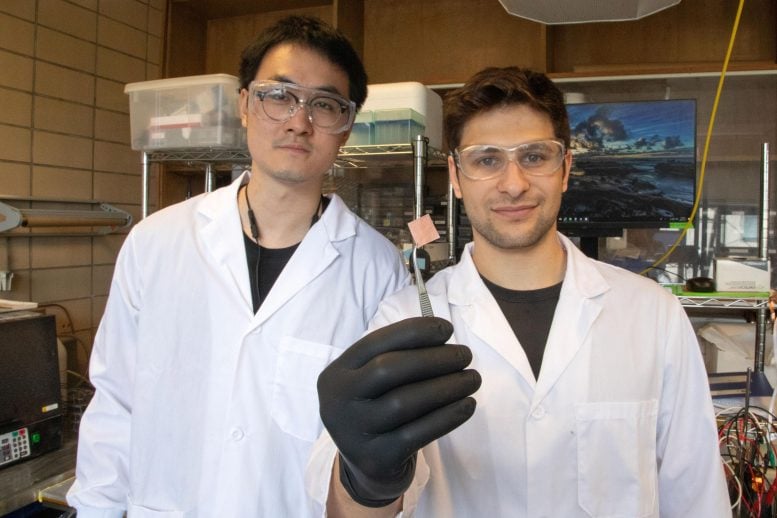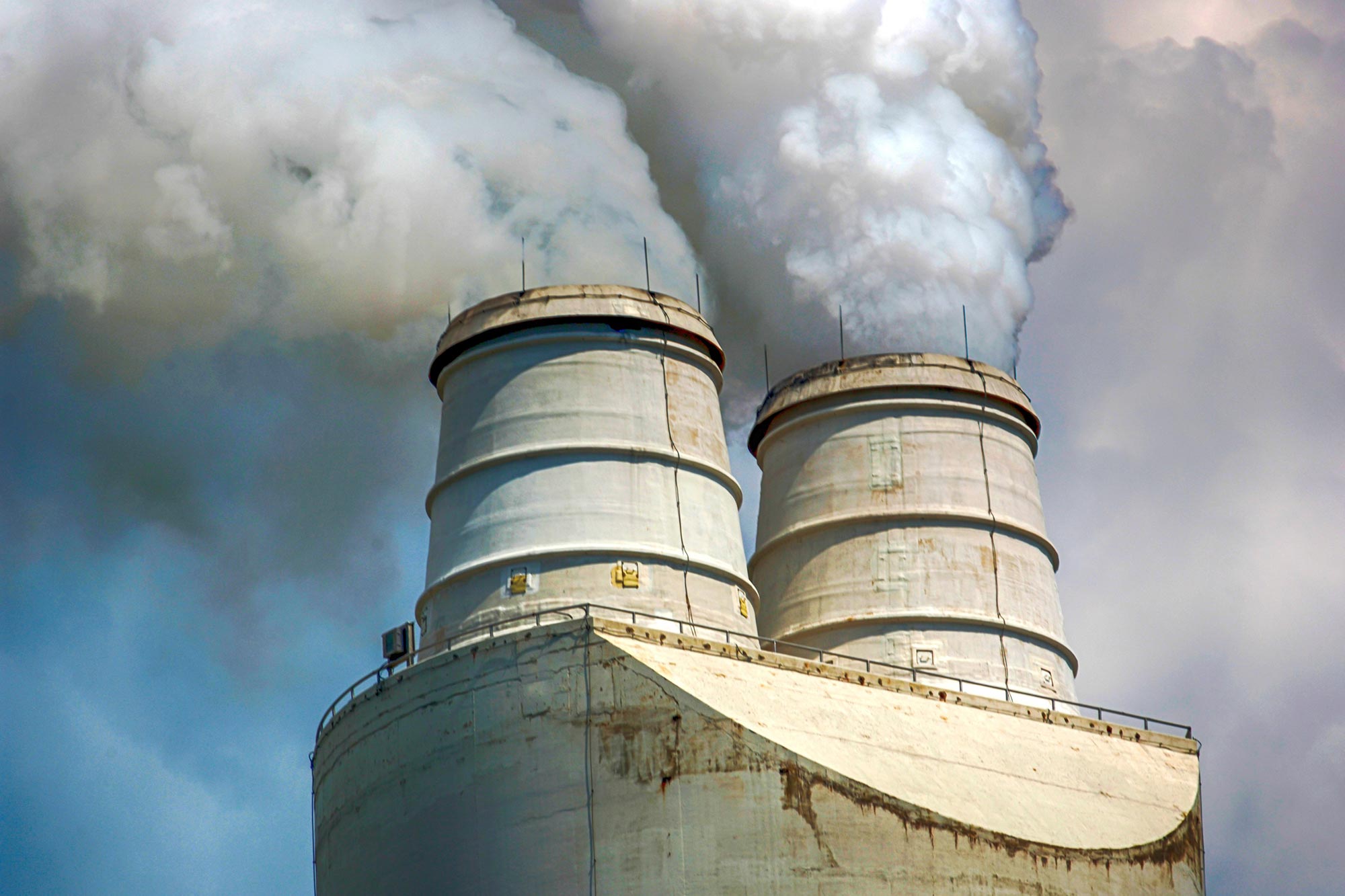Researchers at the University of Toronto Engineering have developed a new catalyst that efficiently converts captured carbon into valuable products such as ethylene and ethanol, even in the presence of sulfur oxide impurities. This breakthrough offers a more economically viable method for carbon capture and upgrading, potentially revolutionizing industries such as steel and cement production by more effectively converting CO2 from waste streams.
An electrochemical catalyst for converting CO2 into valuable products can withstand an impurity that poisons current versions.
A new catalyst improves the conversion of captured carbon into commercial products, maintaining high efficiency despite sulfur oxide impurities. The innovation could significantly reduce costs and energy requirements in carbon capture technologies, impacting heavy industry.
A newly designed catalyst, developed by engineering researchers at the University of Toronto, efficiently converts captured carbon into valuable products, even in the presence of a contaminant that degrades the performance of current versions.
The discovery is an important step towards more economical carbon capture and storage technologies that can be added to existing industrial processes.
Advances in carbon conversion technologies
“Today we have more and better options for low-carbon electricity generation than ever before,” said Professor David Sinton (MIE), lead author of a paper published in Nature Energy on July 4 describing the new catalyst.
“But there are other sectors of the economy that are harder to decarbonize: the steel and cement industries, for example. To help those industries, we need to come up with cost-effective ways to capture and upgrade the carbon in their waste streams.”

University of Toronto Engineering PhD students Rui Kai (Ray) Miao (left) and Panos Papangelakis (right) hold up a new catalyst they designed to convert captured carbon dioxide gas into valuable products. Their version performs well even in the presence of sulfur dioxide, a contaminant that poisons other catalysts. Credit: Tyler Irving / University of Toronto Engineering
Use of electrolyzer in carbon transformation
Sinton and his team use devices known as electrolyzers to convert CO2 and electricity into products such as ethylene and ethanol. These carbon-based molecules can be sold as fuel or used as chemical feedstocks to make everyday items such as plastic.
In the electrolyzer, the conversion reaction takes place when three elements – CO2 gas, electrons and a liquid water-based electrolyte – come together on the surface of a solid catalyst.
The catalyst is often made of copper, but can also contain other metals or organic compounds that can further improve the system. Its function is to accelerate the reaction and minimize the formation of unwanted byproducts, such as hydrogen gas, which reduce the efficiency of the overall process.
Addressing Catalyst Efficiency Challenges
While many teams around the world have produced high-performing catalysts, nearly all of them are designed to operate with a pure CO2 feed. But if the carbon in question is coming from smokestacks, the feed is likely to be anything but pure.
“Catalyst designers generally don’t like dealing with impurities, and for good reason,” says Panos Papangelakis, a doctoral candidate in mechanical engineering and one of the five co-lead authors of the new paper.
“Sulfur oxides, such as SO2, poison the catalyst by binding to the surface. This leaves fewer places for CO2 to react and also causes the formation of chemicals that you don’t want.
“It happens very quickly: while some catalysts can last hundreds of hours on a pure feed, they can drop to 5% efficiency in minutes if you add these impurities.”
While there are well-established methods to remove impurities from CO2-rich exhaust gases before they are fed into the electrolyzer, they take time, energy, and increase the cost of carbon capture and upgrading. Moreover, in the case of SO2, even a little bit can be a big problem.
“Even if you reduce the exhaust gas content to less than 10 parts per million, or 0.001 percent of the supply, the catalyst can still be poisoned within 2 hours,” Papangelakis said.
Innovations in catalyst design
In the paper, the team describes how they designed a catalyst that is more resistant to SO2. To do this, they made two key changes to a typical copper-based catalyst.
On one side, they added a thin layer of polytetrafluoroethylene, also known as Teflon. This non-stick material changes the chemistry on the catalyst surface, hindering the reactions that make SO2 poisoning possible.
On the other side, they added a layer of Nafion, an electrically conductive polymer often used in fuel cells. This complex, porous material contains some areas that are hydrophilic, meaning they attract water, and other areas that are hydrophobic, meaning they repel water. This structure makes it difficult for SO2 to reach the catalyst surface.
Performance under adverse conditions
The team then fed this catalyst a mix of CO2 and SO2, the latter at a concentration of around 400 parts per million, which is typical for an industrial waste stream. Even under these harsh conditions, the new catalyst performed well.
“In the paper, we report a Faradaic efficiency – a measure of the number of electrons that ended up in the desired products – of 50%, which we were able to maintain for 150 hours,” Papangelakis said.
“There are catalysts that may start out at a higher efficiency, maybe 75% or 80%. But again, if you expose them to SO2, within minutes or maybe a few hours, that drops to almost nothing. We were able to withstand that.”
Future directions and implications
Papangelakis says his team’s approach doesn’t affect the composition of the catalyst itself and should therefore be broadly applicable. In other words, teams that have already perfected high-performing catalysts should be able to use similar coatings to resist sulfur oxide poisoning.
While sulfur oxides are the most challenging impurity in typical waste streams, they are not the only one. It is the entire spectrum of chemical contaminants that the team is now focusing on.
“There are many more impurities to consider, such as nitrogen oxides, oxygen, etc.,” says Papangelakis.
“But the fact that this approach works so well for sulfur oxides is promising. Before this work, it was simply assumed that you had to remove the impurities before you could upgrade CO2. What we’ve shown is that there might be another way to deal with it, which opens up a lot of new possibilities.”
Reference: “Improving the SO2 Tolerance of CO2 Reduction Electrocatalysts Using a Polymer/Catalyst/Ionomer Heterojunction Design” by Panagiotis Papangelakis, Rui Kai Miao, Ruihu Lu, Hanqi Liu, Xi Wang, Adnan Ozden, Shijie Liu, Ning Sun, Colin P. O’Brien, Yongfeng Hu, Mohsen Shakouri, Qunfeng Xiao, Mengsha Li, Behrooz Khatir, Jianan Erick Huang, Yakun Wang, Yurou Celine Xiao, Feng Li, Ali Shayesteh Zeraati, Qiang Zhang, Pengyu Liu, Kevin Golovin, Jane Y. Howe, Hongyan Liang, Ziyun Wang, Jun Li, Edward H. Sargent, and David Sinton, July 4, 2024, Nature Energy.
DOI file: 10.1038/s41560-024-01577-9
